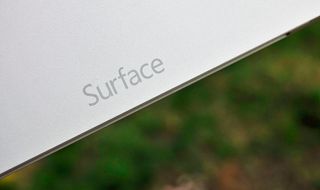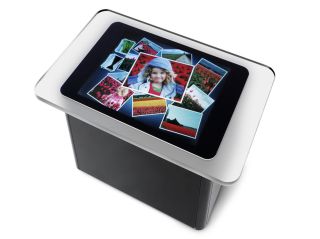Microsoft is working on Surface All-in-One PC destined for your living room
A Surface for your living room may soon be a reality. Our new report confirms that a Surface AIO device is currently being developed by Microsoft.

Microsoft is developing a new Surface all-in-one (AIO) PC running Windows 10. The information comes from a reliable source who has confirmed the news with Windows Central and it follows an earlier report by Digitimes.
While Digitimes claims a Q3 2016 release for the alleged Surface AIO, our sourcing suggests such details are undecided at this time. Like other next-gen Surface products the timeframe for a Surface AIO will partially depend on availability for Intel's new Kaby Lake 14 nanometer processor, the successor to Skylake.
We can also add to the original report that the company is positioning the Surface AIO for the living room. The device is evidently targeting a "modern and elegant" design and is meant to be something akin to a premium appliance or furniture.
Unfortunately, any details about specifications and the Surface AIO design are not known at this time.
Our last report claimed that Microsoft is aiming for an early 2017 launch of new Surface tablets, and a planned "Surface phone", all linked to Windows 10 Redstone 2 general availability. Bringing the Surface AIO into that launch window would seem to make sense.
All-in-one PCs are an exciting development in modern computing. By combining a display with high-end hardware into a single device, the experience is similar to an appliance rather than a traditional PC tower, external peripherals, and messy wires connecting them all together.

Currently, Apple's iMac and Lenovo are the market leaders in AIO devices. Lenovo recently launched the Yoga Home 900 PC (seen above). That device features a 27-inch Full HD display running Intel Core i5 or i7 Broadwell CPUs. The device weighs 16 pounds but is a single, large tablet that can run on an internal battery for up to three hours. The Yoga Home 900 can be propped up on a Surface-like kickstand or laid flat as a table-top tablet, which is ironically reminiscent of the original Surface (now called Microsoft PixelSense).
Get the Windows Central Newsletter
All the latest news, reviews, and guides for Windows and Xbox diehards.
While bringing Windows 10 and modern computing to the home's congregation area seems like an obvious market, no one has fully cracked it yet with any success.
Is this the consumer PixelSense?
Putting all the pieces together and it appears that Microsoft is combining its original PixelSense table-PC concept from 2005 with its new Surface Hub. However, instead of being marketed at large institutions this device is destined for consumers in the living room. This claim is complete guesswork on our part, but the dream of PixelSense for consumers has always piqued people's interest.

Creating a device with advanced 3D touch sensors, a high-resolution display with Windows Ink, and other technology could result in an amazing AIO experience. With the larger size, Microsoft could have more space to add newer hardware as well.
Microsoft specifies PixelSense as having four main features, which could be related to this Surface AIO project:
- Direct interaction or the ability to "reach out and touch" the interface
- Multi-touch contact similar to tablets that have at least 10-points of touch recognition
- Multi-user experience where multiple users can use the surface at the same time
- Object recognition or identifying things like you placing your phone down on the surface.
Microsoft has demonstrated placing your phone on the PixelSense surface and transferring photos and documents instantly to the computer. Users could then interact with the photos similar to the famed Minority Report sequence from the hit 2002 film.
Some of the technology and theory behind PixelSense can be seen in a 2012 video posted by Microsoft on the ongoing project. The Microsoft PixelSense blog went dormant in June 2013.
The original Surface based on PixelSense was commercially unveiled in 2007 by then Microsoft CEO Steve Ballmer. It would be very interesting if exactly ten years later in 2017 the device becomes a consumer reality. Of course, like all projects in development at Microsoft things could change when determining final product viability. For now, continue to watch this space.
Would you want a large Surface for your living room? If so, what would it need to have in order to be different?

Daniel Rubino is the Editor-in-chief of Windows Central. He is also the head reviewer, podcast co-host, and analyst. He has been covering Microsoft since 2007, when this site was called WMExperts (and later Windows Phone Central). His interests include Windows, laptops, next-gen computing, and watches. He has been reviewing laptops since 2015 and is particularly fond of 2-in-1 convertibles, ARM processors, new form factors, and thin-and-light PCs. Before all this tech stuff, he worked on a Ph.D. in linguistics, watched people sleep (for medical purposes!), and ran the projectors at movie theaters because it was fun.
